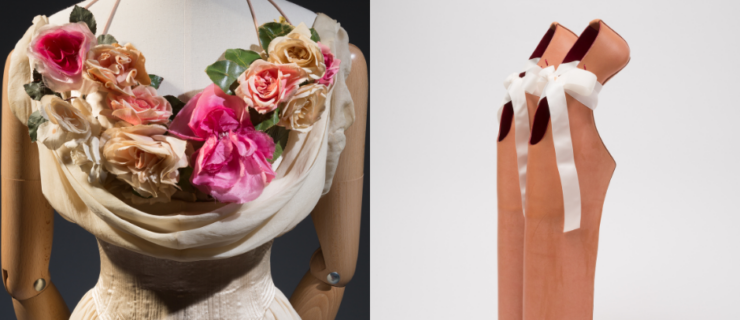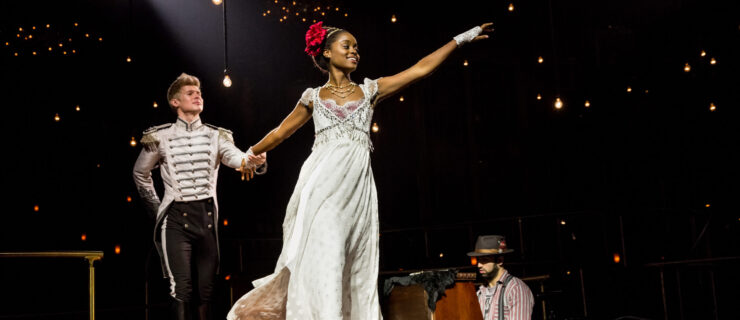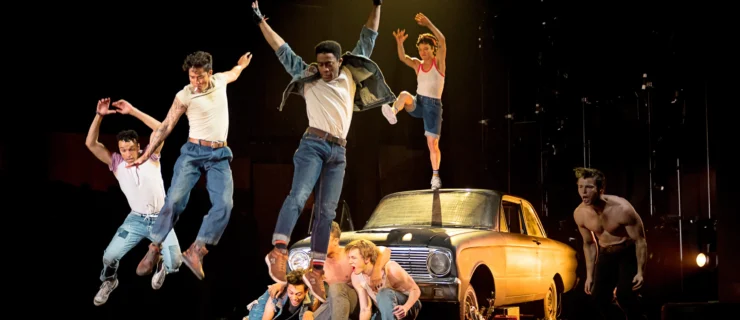Gallim Dance
Gallim Dance
Joyce Soho, NYC
January 9–18, 2009
Reviewed by Susan Yung
Francesca Romo, Troy Ogilvie,
and Caroline Fermin in
Andrea Miller’s
Blush.
Photo by Steven Schreiber.
Clearly rooted in artistic director Andrea Miller’s years spent with Batsheva Dance Company, New York-based Gallim Dance showed an evolution of the Israeli company’s profound influence. But a choreographic legacy can be both a great gift and a burden. Equipped with a proven language, what is an artist’s obligation to craft something new––or is it self-defeating? And where is the line between homage and derivativeness? Miller dealt with these issues in part by presenting two full-length works separated by two years.
I Can See Myself in Your Pupil, from 2008 and with eight dancers, strongly evokes Batsheva––flock-like clusters of dancers hovering between twitches, the line of dancers storming downstage, arms crooked at the elbows and flung wide, the eclectic jukebox score. The work begins with the ensemble jumping, piston-style, half of them at a time. A featured pair or trio might be shadowed or balanced by the rest of the group doing a different passage.
Miller shows an affinity for gravity in full pliés in fourth or fifth held for prolonged moments, the performers’ legs spread wide, daring us to watch them closely. The dancers hop with heavy landings to a propulsive beat, or crash to the floor violently. Moments of stillness alternate with explosive leaps or collisions. The dancers change costumes several times in a progression to formality, from plain white T-shirts and jewel-colored tights to a variety of dresses in shades of green or print shirts. Of particular note were Francesca Romo, with her bold attack and charming demeanor, and Troy Ogilvie, smooth and reserved. But it was difficult not to be constantly reminded of Batsheva.
In Blush, a new work set again to a varied music playlist, shows development away from the direct influence of Naharin. The six dancers’ bodies and hair are whitewashed, over which they wear black batwing tops or draped shorts. The men move haltingly to the shimmering, ominous music, arching their torsos and using their shoulders to lead. A woman is repeatedly hoisted by two men who then trap her, limbs waving, between their bodies. The music shifts to a heavy instrumental beat, and then toward the cliché with Chopin, back through contrasting Radiohead (overly amplified, like much of the sound).
There are many moments of weightless suspension or indecision, balanced by dead-weight drops into the floor in heavy footstrikes or deep knee bends. A row of footlights upstage lends high drama (lighting by Vincent Vigilante, who adapted Stephen Petrilli’s scheme for I Can See Myself). Abetted by the dancers’ mounting exhaustion, a frantic air pervades the end of Blush, threatening to spin the piece out of control. But Gallim Dance is cultivating an interesting branch off the Batsheva tree that will be worth tracking, as long as it continues to move away from the derivative.




